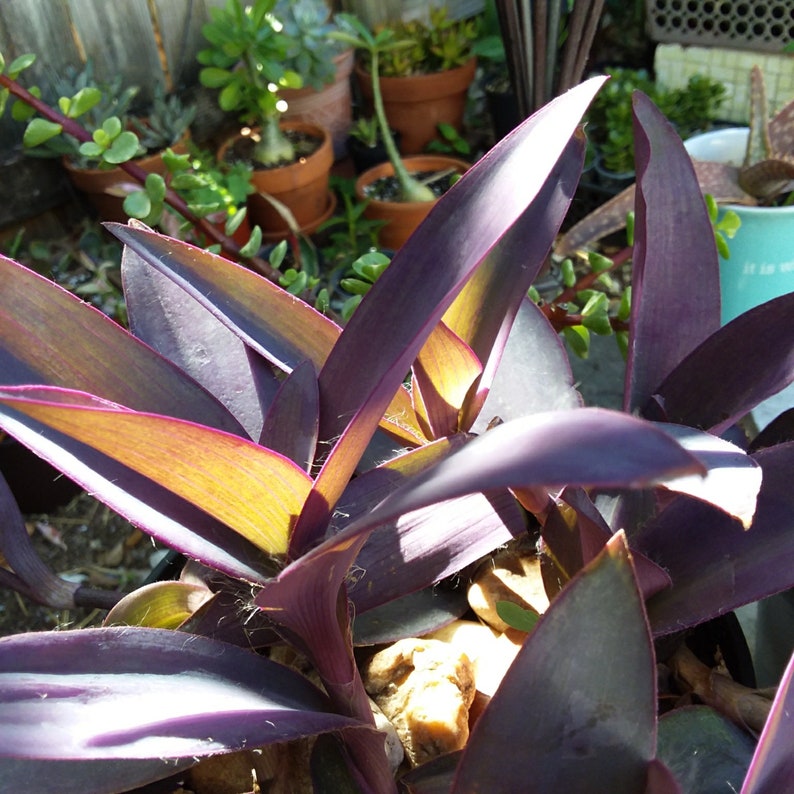
It can be propagated by cuttings however, as a cultivated variety, be aware that it may be subject to certain restrictions or prohibitions on propagation. This is a selected variety of a species not originally from North America. Consider covering it with a thick layer of mulch in winter to protect it in exposed locations or colder microclimates. It is highly tolerant of urban pollution and will even thrive in inner city environments. It is not particular as to soil type or pH. It prefers to grow in average to moist conditions, and shouldn't be allowed to dry out.
PURPLE HEART PLANT FULL
This plant does best in full sun to partial shade. As this plant tends to go dormant in summer, it is best interplanted with late-season bloomers to hide the dying foliage. As such, gardeners should take into consideration that it will perform differently than it would in its native habitat. Although it's not a true annual, this fast-growing plant can be expected to behave as an annual in our climate if left outdoors over the winter, usually needing replacement the following year. Its foliage tends to remain low and dense right to the ground. When grown in masses or used as a bedding plant, individual plants should be spaced approximately 18 inches apart. Purple Heart Spider Lily will grow to be about 10 inches tall at maturity, with a spread of 24 inches. Purple Heart Spider Lily is recommended for the following landscape applications It has no significant negative characteristics. It is a good choice for attracting butterflies to your yard, but is not particularly attractive to deer who tend to leave it alone in favor of tastier treats. This is a relatively low maintenance plant, and is best cleaned up in early spring before it resumes active growth for the season. Its relatively fine texture sets it apart from other garden plants with less refined foliage. Purple Heart Spider Lily is an herbaceous annual with a trailing habit of growth, eventually spilling over the edges of hanging baskets and containers. Purple Heart Spider Lily's attractive pointy leaves remain purple in color throughout the season on a plant with a trailing habit of growth. This variety is excellent as a groundcover in a sunny area, and is grown primarily for its colorful purple-pink foliage its trailing form also works with hanging baskets, or draped from garden walls great easy care indoor plant as well Purple Heart Plant offers blade-shaped leaves in a standout shade of gleaming deep purple that meander around companions in containers, garden beds, and window boxes, adding eye-catching contrast.Other Names: Tradescantia pallida purpurea Purple Heart is an herbaceous evergreen perennial with a ground-hugging habit of growth.

Purple Heart Plant (Tradescantia pallida) is a type of ornamental plant that comes from. The most striking thing about the Purple Heart plant is its foliage color. Tradescantia pallida, or the Purple Heart Plant, are known for their iconic purple stems that tend to grow out and trail. However, despite their unique blooms, many gardeners choose these plants for their foliage, which is also particularly vibrant.

Purple-heart plants (Tradescantia pallida) are aptly named because their iconic purple stems grow beautiful blooms that range from violet to pink. Tradescantia pallida is a tender evergreen perennial native to northeast Mexico (from Tamaulipas to Yucatan) grown as an ornamental for its striking purple foliage. Purple Heart (Tradescantia Pallida) used as a bedding plant at the Missouri Botanical Garden.


 0 kommentar(er)
0 kommentar(er)
